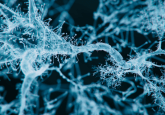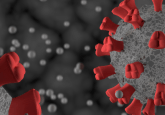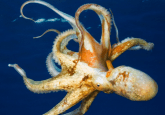Human fat storage: how we became the ‘fat primate’

Human fat storage and its propensity towards the formation of white fat cells has been explained by researchers examining DNA packaging.
Plenty of attention has been paid in both medical and popular media to the undeniable effect that the evolution of human society has had on the increasing obesity rates in our species. However, long before sedentary working days and sausage rolls, humanity embarked on a genetic evolution divergent to our other primate relatives, one that established us as “the fat primates” according to Devi Swain-Lenz of Duke University (NC, USA).
The significant disparity between humans and primates with regard to fat constitution has been well established. A healthy body fat percentage for a human ranges from between 14% to 31% in comparison to the 9% body fat found in other primates. However, new research from a team at Duke, led by Swain-Lenz, could finally explain this difference and it all pivots on the formation of white or beige fat cells.
“We’ve lost some of the ability to shunt fat cells toward beige or brown fat, and we’re stuck down the white fat pathway.”
White fat cells are primed for energy storage and are what contribute to visceral, visible and, if in abundance, unhealthy fat. Beige fat cells are designed to burn calories in order to produce thermal energy, allowing mammals to keep warm in challenging conditions. Humans produce white fat cells far more often than their beige counterpart, especially when compared to the relative ratios present in other primates.
In order to explain the reason for this white fat cell bias, Swain-Lenz and her team examined fat samples from humans, chimps and rhesus macaque monkeys. ATAC-seq was used to scan the DNA in each sample to examine how it is packaged in each species.
DNA is typically wound around chromatin in order to condense the molecule, allowing it to fit inside the nucleus. This process also means that the majority of the DNA is not readily available to transcription factors or the rest of the transcription machinery. In the fat cells studied, the researchers identified 780 regions of exposed, accessible DNA in the chimps and rhesus macaques that were condensed and inaccessible in the human samples. Amongst these 780 regions, a recurring section of DNA was identified that is involved in the transdifferentiation of white fat cells into beige fat cells.
-
A final decision on dietary fats
-
Epigenetics and metabolism: what do we know?
-
Transcription factor binding: an evolutionary landmark?
These results, recently published in Genome Biology and Evolution, provide a clear explanation for why humans have a higher fat content than primates; the genes required to convert white to beige thermogenic fat cells are literally locked away, unavailable for transcription and therefore fat in humans is much less likely to be stored as readily consumed beige fat.
“We’ve lost some of the ability to shunt fat cells toward beige or brown fat, and we’re stuck down the white fat pathway,” explained Swain-Lenz.
This leads us to an interesting question: Why have humans evolved to store more fat? One reason for this evolutionary path could be due to the development of the human brain’s increasingly voracious appetite for energy after the split from our early primate relatives, a period that represents 6–8 million years and a three-fold increase in brain size. Not only are human brains large, but they also use more energy, when qualified for mass, than any other tissue in the body. Therefore, the ability to store fat in order to provide energy for this metabolic behemoth would have provided a clear survival benefit to our ancestors.
Another potential theory could be due to the discovery of fire and the embryonic clothing of early hominids, which may have reduced the survival benefit incurred from heat-producing beige fat cells. However, due to the significantly shorter period of time in which hominids have possessed control of fire, around 1 million years [2], this theory may bear less weight.
This study could assist in future efforts to convert existing white fat cells into their beige counterparts, making it easier for people to lose weight and providing a possible antidote for the growing obesity crisis. However, much to Swain-Lenz’s chagrin, these developments are not yet a tangible reality: “Maybe we could figure out a group of genes that we need to turn on or off, but we’re still very far from that. I don’t think that it’s as simple as flipping a switch. If it were, we would have figured this out a long time ago.”





